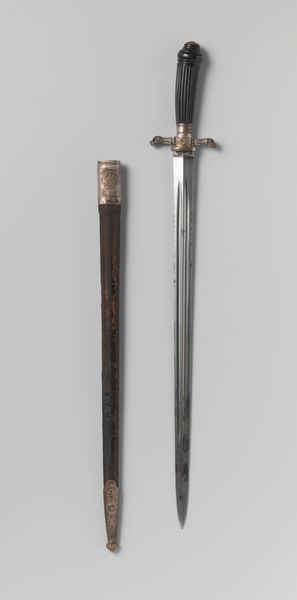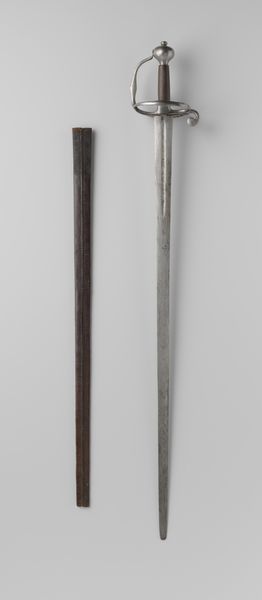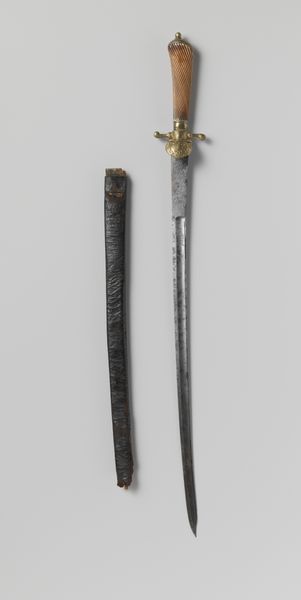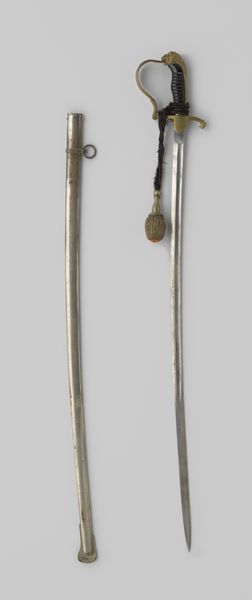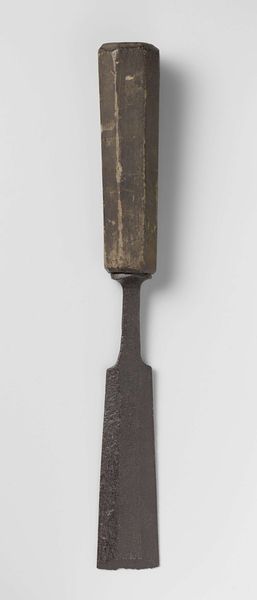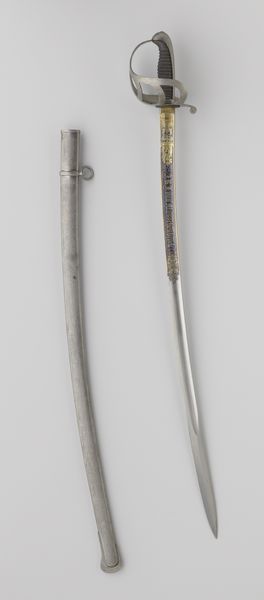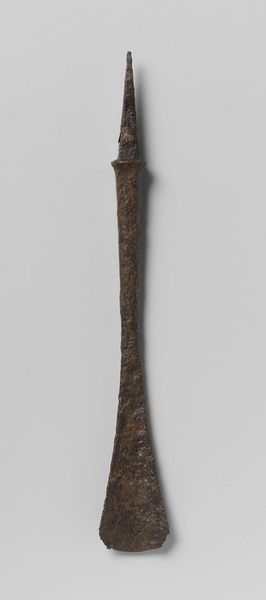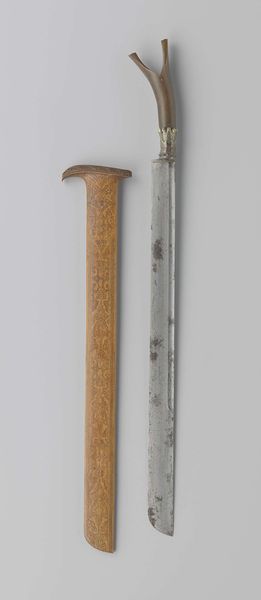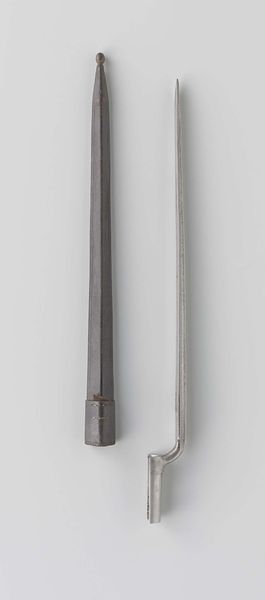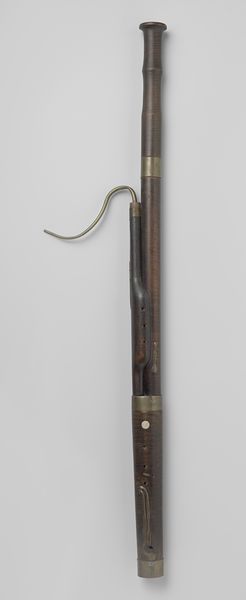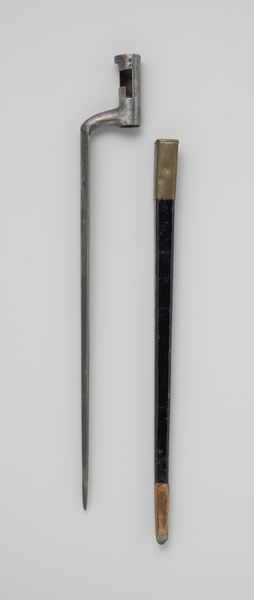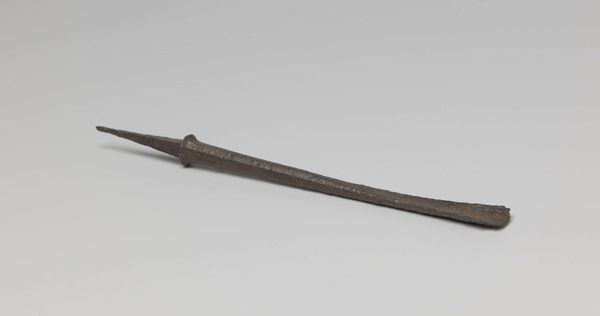
Bajonet met schede horend bij een vuursteengeweer Staatse leger c. 1780 - 1805
0:00
0:00
johannesrousseau
Rijksmuseum
metal, sculpture, wood
#
weapon
#
metal
#
sculpture
#
wood
#
history-painting
Dimensions: length 47 cm, height 11 cm, depth 3.2 cm, length 44.5 cm, height 10.7 cm, depth 2.8 cm
Copyright: Rijks Museum: Open Domain
Curator: The piece we're looking at is a bayonet with its scabbard, designed for a flintlock rifle, likely used by the Dutch States Army. It dates roughly from 1780 to 1805. Editor: Its very austerity strikes me first. The cold gleam of the metal blade contrasting against the warm, textured wood of the scabbard is unexpectedly elegant. Curator: These bayonets were instrumental, weren't they? The transformation of warfare in the late 18th century owed much to these efficient killing tools. Think of their prevalence in major conflicts such as the Fourth Anglo-Dutch War. Editor: Yes, they are elegant. The shape is minimalist. The way that metallic hook flows seamlessly into the blade shows refined form and an efficient simplicity. Its lethal beauty hinges entirely on the stark linearity, from its socket to its acutely angled tip. Curator: Indeed. Production on such a large scale indicates evolving concepts around nationhood and warfare, transforming warfare into something less based on individual heroism and skill and more based on large scale violence enabled through improved weapons distribution. Editor: One sees the form. One ponders that smooth metal, but doesn't touch. One imagines, though, how light would refract on that polished blade, or how the textures of the wooden sheath might feel worn and smooth after countless uses in service. Curator: And each scratch represents stories. How do you see this kind of artifact fitting into our gallery displays, shaping our visitor's understanding of the late 18th-century state? Editor: As a stark emblem of functionality; one devoid of unnecessary embellishment and brutal intent. Something of terrible simplicity and austere elegance. It would speak volumes about that moment. Curator: Its formal design embodies an era. This piece prompts vital reflection on our history of technology, weaponry, and geopolitical ambition. Editor: Absolutely. It highlights the moment when form met purpose, producing a striking if ominous result.
Comments
No comments
Be the first to comment and join the conversation on the ultimate creative platform.
